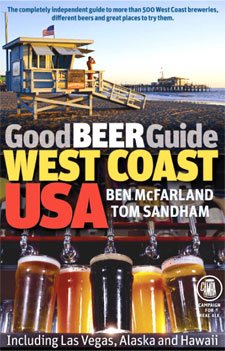Next weekend in Washington, D.C., the Brewers Association plans to show that beer belongs at the table with the grownups. OK, maybe that’s not the best analogy – suggesting beer might otherwise be served at the kids’ table won’t go over well in most circles – but you get the point of SAVOR: An American Craft Beer & Food Experience.
And the BA has called on several luminaries from the wine world to help make the case, like Ray Isle from Food & Wine and Lauren Buzzeo of Wine Enthusiast. Fortunately beer people as well, so I’ll pass on pointing out that maybe this looks a bit too much like beer has an inferiority complex.
For the most part attendees won’t hear much argument about whether beer or wine is better.
But that debate seems like a good way to sell the printed word. Exhibit 1: “Grape vs. Grain” by Charles Bamforth. Exhibit 2: “He Said Beer, She Said Wine” by Sam Calagione and Marnie Old. Three and four: Old and Calagione have taken their rivalry to the current issues of All About Beer and Beer magazines.
And a friendly rivalry it is. It started with a series of beer dinners where they’d pair each dish with one beer and one wine and ask dinners to vote for their favorites. They are a very entertaining team, in person and in print, and don’t be fooled if a few of their exchanges look a little adversarial. Although Old is a sommelier and educator and Calagione — you surely know — the founder of Dogfish Head Craft Brewery, in this instance they could both be described as promoters, even sales people.
HSB,SSW is jammed with inviting photos, including 20 each of the protagonists. Both talk about simplifying wine/beer and the editors of the book have set out to help them with easy-to-understand presentations. For instance, charts with objective characteristics for specific beers or wines, then charts with rules of thumb about serving wine or beer with particular dishes.
Bamforth’s approach is decidedly more academic. He is the Chair of the Department of Food Science and Technology and Anheuser-Busch Endowed Professor of Malting and Brewing Sciences at the University of California, Davis. Reading the book feels like attending a college lecture, but one conducted by everybody’s favorite professor. He successfully acts as his own foil, spinning stories that go beyond the chemistry behind beer, such a look at the evolution of the pub.
Yet you remember this is the author of “Standards of Brewing – A Practical Approach to Consistency and Excellence” when he chooses to explain dimethyl sulfide (DMS) — an aroma often described cooked corn — in particular detail in order to illustrate the complexity of brewing.
He’s always the educator, and the book could be characterized as a beer primer from wine drinkers and a wine primer for beer drinkers. He doesn’t hide his own preferences, writing in the preface, “To that extent, and reflecting my professional specialty, the theme of this book is primarily one of demonstrating how beer is a product of an excellence and sophistication to match wine, and I seek to do this by championing beer while being entirely fair to that other noble beverage.”
He’d need to be a little flashier to keep up with Calagione and Old. Consider this from the authors within two pages.
Old: Every culture what has had access to both (beer and wine) has judged wine to be superior — from the ancient Mesopotamians straight through the modern day.
Calagione: “It’s true that beer drinkers may burp more often than wine drinkers, which could seem “uncivilized.” However, I’ve always thought that is because wine drinkers don’t stop yakking about pretentious things like “notes” and “bouquets” for long enough to build up the required internal pressure.”
Old and Calagione will encore their debate to SAVOR on Saturday. Quite honestly, it wouldn’t be fair for Bamforth to act as “referee,” but let’s give him the final word.
“Wine and beer — both wonderful beverages, sublime outcomes of humankind’s oldest agricultural endeavors. They have much to learn from one another.”
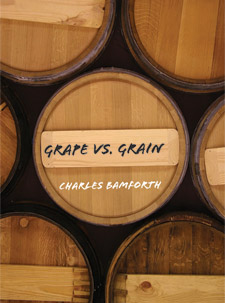
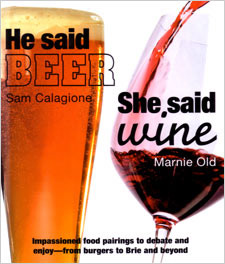
 Host Thomas Vincent of Geistbear Brewing Blog has announced the theme for The Sessions #16:
Host Thomas Vincent of Geistbear Brewing Blog has announced the theme for The Sessions #16: 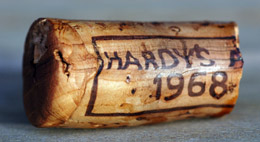 By the time we got to the 1968 the sun had set on the Sandia Mountains — we drank these beers on our back portal — and the lights had come up in the Rio Grande Valley. We weren’t comparing how each beer looked in the glass or taking notes; instead talking about things friends talk about, although that certainly included the aromas and flavors from the succession of beers.
By the time we got to the 1968 the sun had set on the Sandia Mountains — we drank these beers on our back portal — and the lights had come up in the Rio Grande Valley. We weren’t comparing how each beer looked in the glass or taking notes; instead talking about things friends talk about, although that certainly included the aromas and flavors from the succession of beers.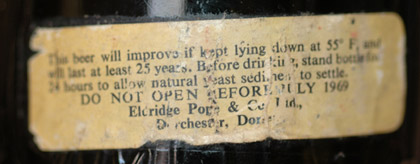
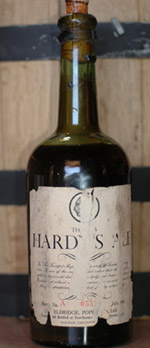 The time has come to open the 1968 bottle of Thomas Hardy’s Ale.
The time has come to open the 1968 bottle of Thomas Hardy’s Ale.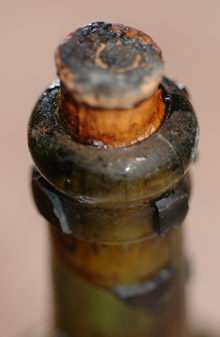 And when Daria bought it in an eBay auction the chap in the UK stated up front that he hadn’t treated the beer with the care stated on the back label (which sits on the bottle just as crooked as it looks in the photo above). But it didn’t seem right to set it out on shelf — because I want to look at it, that’s why — with the beer still inside. You’ll notice up top that the beer no longer reaches into the neck.
And when Daria bought it in an eBay auction the chap in the UK stated up front that he hadn’t treated the beer with the care stated on the back label (which sits on the bottle just as crooked as it looks in the photo above). But it didn’t seem right to set it out on shelf — because I want to look at it, that’s why — with the beer still inside. You’ll notice up top that the beer no longer reaches into the neck.